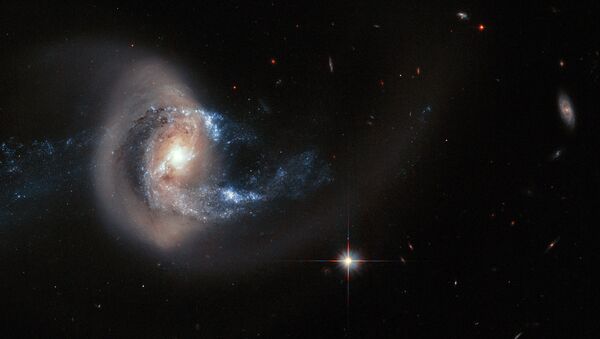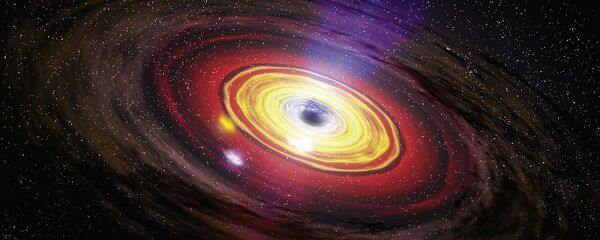Ekaterina Blinova — A new stunning photo was taken by the Hubble Space Telescope, depicting spiral NGC 7714 galaxy violently distorted as a result of the dramatic interaction with another nearby galaxy.
"[NGC 7714] has witnessed some violent and dramatic events in its recent past. Tell-tale signs of this brutality can be seen in NGC 7714's strangely shaped arms, and in the smoky golden haze that stretches out from the galactic center," said the official press release of the European Space Agency (ESA).
Creation through destruction; the subject of today's #AstroTweets. This is NGC 7714 taken by Hubble Space Telescope. pic.twitter.com/enUUGQEJuw
— Joshua St. John (@Joshua_St_John) 17 февраля 2015
ESA characterized NGC 7714 as a typical "Wolf-Rayet" galaxy, pointing to a large number of new stars forming within it. The stars are extremely hot and bright, each with a mass exceeding that of the Sun. However, they lose most of their mass swiftly due to strong and fierce space winds.
The Hubble Space Telescope, launched in April 1990, has long been helping space researchers to explore mysteries hidden in the depths of outer space.


